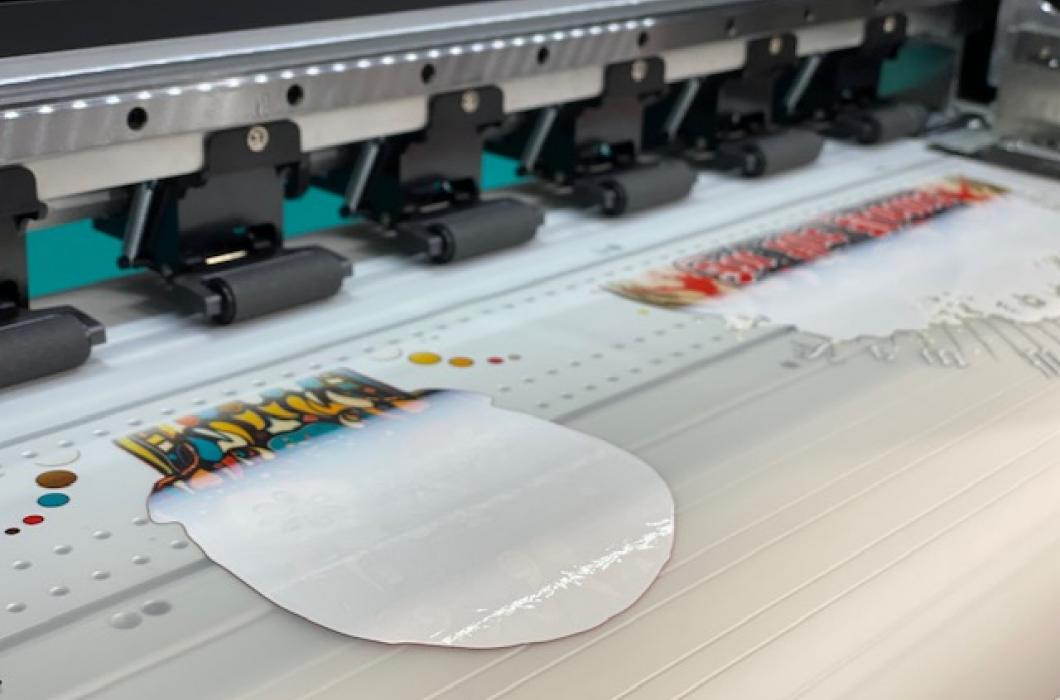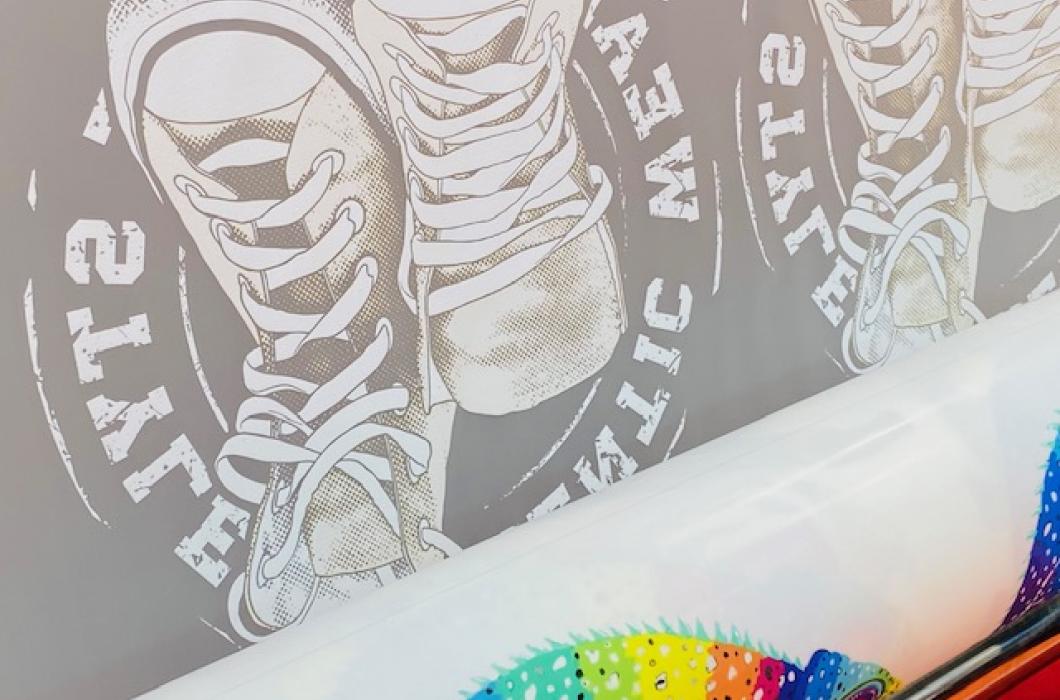DTF fabric printing
Today this process, originally called Direct-to-Film, is increasingly becoming known as Direct-to-Transfer.
What is DTF printing?
It is a type of digital printing on textile. The process involves transferring graphics onto a flexible pet surface by means of an inkjet printer. A powered adhesive is then added and fixed in place with a heat source coming either from an oven or an iron. To complete the process, heat and pressure are applied to the T-shirt, sweatshirt or garment in question.
The main characteristic of the DTF printing technique is that the image adheres to the fabric without having to peel it off. This enables the fast printing of small and fine texts/drawings onto personalise textiles in cotton, polyester, etc.
The advantages of the DTF process are being able to print small and fine texts as well as full-colour logos/images in CMYK colours.
The result is an image with excellent adhering properties that can be felt when touched. The drawing is printed onto the fabric rather than impregnating it. In other words, it doesn’t penetrate the fabric. It feels very similar to vinyl or transfer finishes, but better. The DTF print is quite flexible and non-breathable, making the fact that it is a non-porous material more noticeable in bigger images. This is something you should take into careful account, given the obvious difference between DTF and digital fabric printing for example. They are different qualities.
The technological aspect of the process is simple and the work involved takes longer compared to other printing techniques. This makes it cheaper than other printing options. However, the longer printing time from start to finish of the process makes this a slower production method for industrial print runs.
It is another branch of the transfer printing process, alongside others that were already used, such as screen-print, vinyl or heat transfer printing. It is perfect for highly detailed multi-coloured prints, and for small prints.



